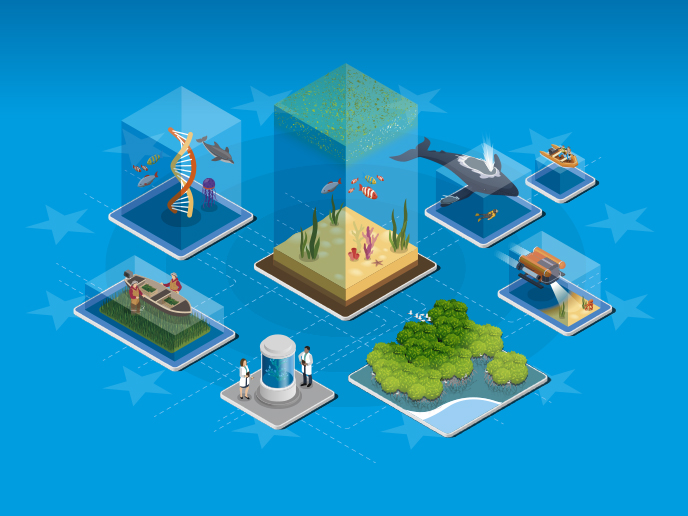The EU contains 1.3 million km of river habitat and over 100 000 km of coastline across five major maritime zones, from the Arctic to the subtropical region – overseas territories not included. These ocean and coastal ecosystems and habitats, from cold water coral beds to alpine marshlands, play a significant role in the global carbon cycle, representing Europe’s largest long term carbon sink, as well as acting as biodiversity hotspots. Over the past decade, there has been a marked increase in research efforts to understand the ocean and blue carbon sinks and explore their potential in climate mitigation frameworks. Evaluating and quantifying the broad range of benefits provided by coastal and marine ecosystems should strengthen the ability to account for them in nationally determined contributions and national adaptation plans. Yet many of Europe’s riverine and maritime habitats are under threat. Fisheries have been overexploited, shellfish beds damaged by bottom trawling, invasive alien species, and habitat loss, and coastal areas damaged by pollution and anthropogenic pressure, such as built infrastructures. On land, wetlands have been drained for agricultural and urban development, and rivers dammed and buried. If degraded or lost, these ecosystems are likely to release most of their carbon back into the atmosphere. While the potential climatic benefits of blue carbon ecosystems can only be a modest addition to rapid reduction of greenhouse gas emissions, blue carbon ecosystems can help reduce the risks and impacts of climate change, with multiple co-benefits. Two mutually supporting management approaches are possible. The first is to maintain the integrity of natural carbon stores in healthy ecosystems, decreasing their potential release of greenhouse gases. The second is the century-scale restoration of their potential to capture and sequester carbon, through actions that restore the functioning of those degraded marine ecosystems. In both cases, the healthy functioning of these ecosystems is highly dependent on maintaining a healthy biodiversity, which also fulfils the EU objectives of halting and reversing biodiversity loss. The projects highlighted in this Pack are dedicated to improving our understanding of blue carbon processes and advancing research in this essential field of study. The work is divided into three chapters. The first explores how carbon moves through ocean ecosystems, and the impacts that human activity and climate change are having on these processes. The second explores new solutions, tools and techniques, from robotic sampling vehicles to environmental DNA analysis. The final chapter examines how to value blue carbon ecosystem services, placing them at the heart of socioeconomic and environmental policymaking. Together, they highlight the need to understand – and protect – Europe’s aquatic habitats, laying a path for a holistic approach to climate change mitigation efforts, the benefits of which will be felt far beyond Europe’s riverbanks and coastlines.
Carbon in marine and coastal ecosystems
New solutions, tools, techniques
Valuing blue carbon ecosystem services
Share this page
Download
Last update: 4 June 2024
Permalink: https://cordis.europa.eu/article/id/454789-blue-carbon-for-biodiversity-and-climate-action
European Union, 2025



